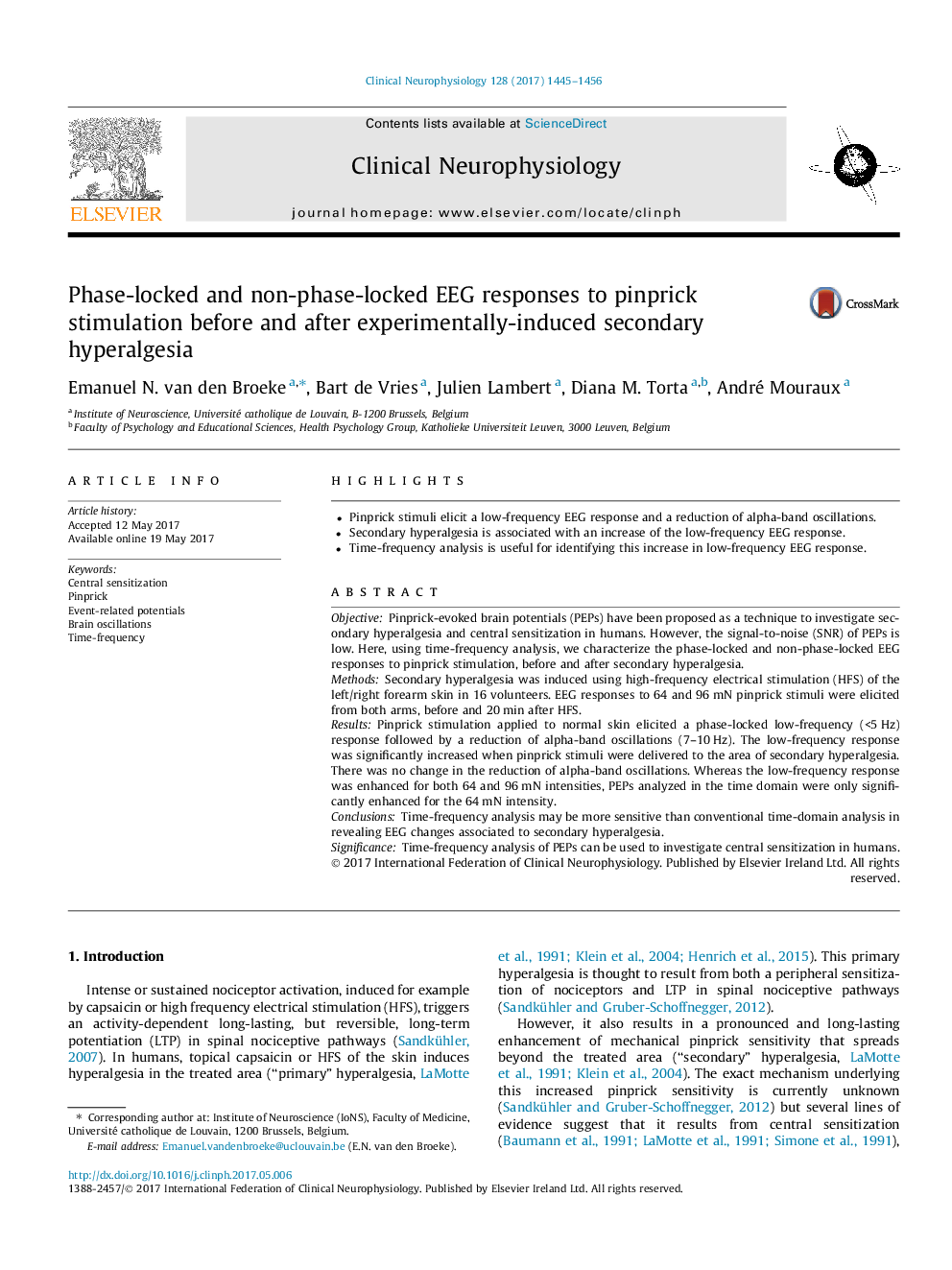| Article ID | Journal | Published Year | Pages | File Type |
|---|---|---|---|---|
| 5627618 | Clinical Neurophysiology | 2017 | 12 Pages |
â¢Pinprick stimuli elicit a low-frequency EEG response and a reduction of alpha-band oscillations.â¢Secondary hyperalgesia is associated with an increase of the low-frequency EEG response.â¢Time-frequency analysis is useful for identifying this increase in low-frequency EEG response.
ObjectivePinprick-evoked brain potentials (PEPs) have been proposed as a technique to investigate secondary hyperalgesia and central sensitization in humans. However, the signal-to-noise (SNR) of PEPs is low. Here, using time-frequency analysis, we characterize the phase-locked and non-phase-locked EEG responses to pinprick stimulation, before and after secondary hyperalgesia.MethodsSecondary hyperalgesia was induced using high-frequency electrical stimulation (HFS) of the left/right forearm skin in 16 volunteers. EEG responses to 64 and 96Â mN pinprick stimuli were elicited from both arms, before and 20Â min after HFS.ResultsPinprick stimulation applied to normal skin elicited a phase-locked low-frequency (<5Â Hz) response followed by a reduction of alpha-band oscillations (7-10Â Hz). The low-frequency response was significantly increased when pinprick stimuli were delivered to the area of secondary hyperalgesia. There was no change in the reduction of alpha-band oscillations. Whereas the low-frequency response was enhanced for both 64 and 96Â mN intensities, PEPs analyzed in the time domain were only significantly enhanced for the 64Â mN intensity.ConclusionsTime-frequency analysis may be more sensitive than conventional time-domain analysis in revealing EEG changes associated to secondary hyperalgesia.SignificanceTime-frequency analysis of PEPs can be used to investigate central sensitization in humans.
